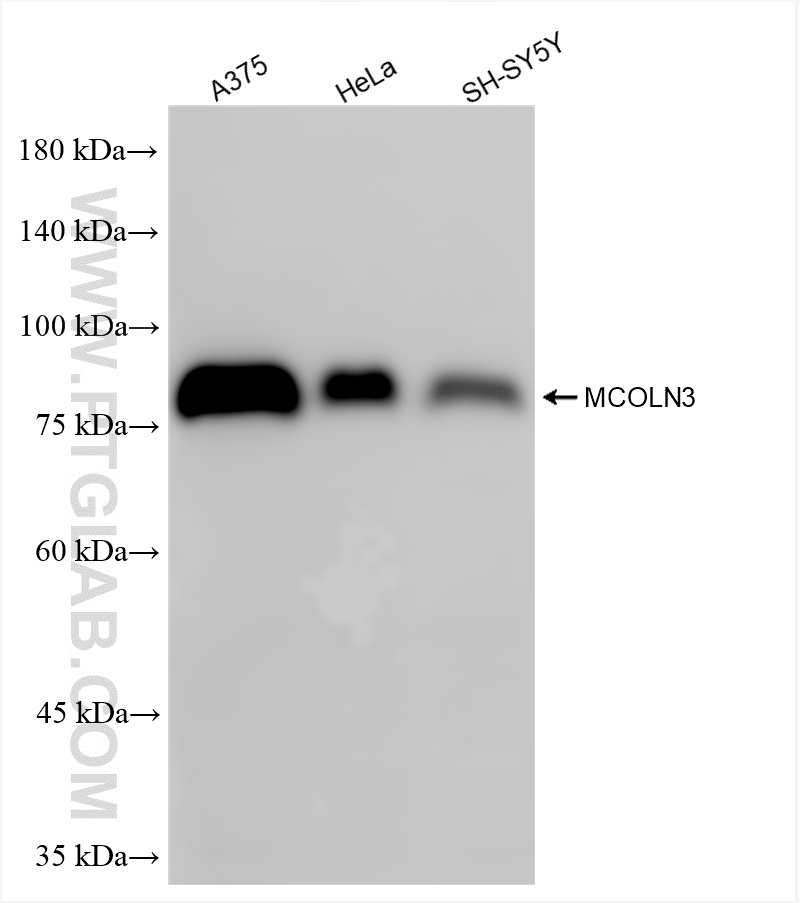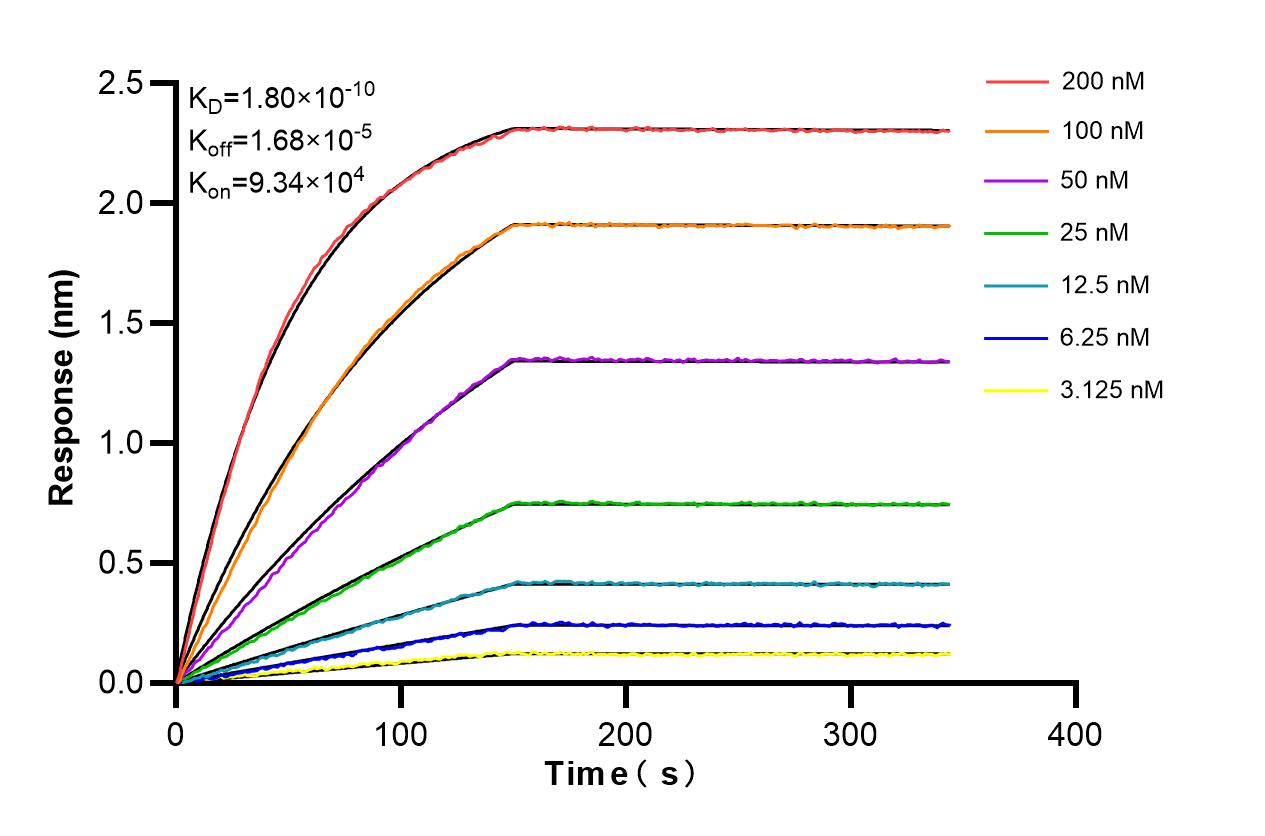验证数据展示
经过测试的应用
| Positive WB detected in | A375 cells, HeLa cells, SH-SY5Y cells |
推荐稀释比
| 应用 | 推荐稀释比 |
|---|---|
| Western Blot (WB) | WB : 1:1000-1:4000 |
| It is recommended that this reagent should be titrated in each testing system to obtain optimal results. | |
| Sample-dependent, Check data in validation data gallery. | |
产品信息
86202-1-RR targets MCOLN3 in WB, ELISA applications and shows reactivity with human samples.
| 经测试应用 | WB, ELISA Application Description |
| 经测试反应性 | human |
| 免疫原 | MCOLN3 fusion protein Ag4962 种属同源性预测 |
| 宿主/亚型 | Rabbit / IgG |
| 抗体类别 | Recombinant |
| 产品类型 | Antibody |
| 全称 | mucolipin 3 |
| 别名 | Mucolipin 3, Transient receptor potential channel mucolipin 3, TRP ML3, TRPML3 |
| 计算分子量 | 64 kDa |
| 观测分子量 | 80 kDa |
| GenBank蛋白编号 | BC060765 |
| 基因名称 | MCOLN3 |
| Gene ID (NCBI) | 55283 |
| 偶联类型 | Unconjugated |
| 形式 | Liquid |
| 纯化方式 | Protein A purification |
| UNIPROT ID | Q8TDD5 |
| 储存缓冲液 | PBS with 0.02% sodium azide and 50% glycerol, pH 7.3. |
| 储存条件 | Store at -20°C. Stable for one year after shipment. Aliquoting is unnecessary for -20oC storage. |
背景介绍
MCOLN3 (Mucolipin 3) is a member of the TRPML (Transient Receptor Potential Mucolipin) gene family and encodes a non-selective cation channel protein that is primarily localized on the membranes of endosomes and lysosomes. MCOLN3 promotes endosome acidification, regulates membrane transport and fusion, and is involved in the autophagy process. Additionally, MCOLN3 is involved in the regulation of intracellular calcium (Ca²⁺) and iron (Fe²⁺) ion homeostasis, maintains lysosomal membrane potential, promotes endosome-lysosome fusion and material transport (such as autophagy), and may also be involved in neuronal signaling and immune regulation.
实验方案
| Product Specific Protocols | |
|---|---|
| WB protocol for MCOLN3 antibody 86202-1-RR | Download protocol |
| Standard Protocols | |
|---|---|
| Click here to view our Standard Protocols |

